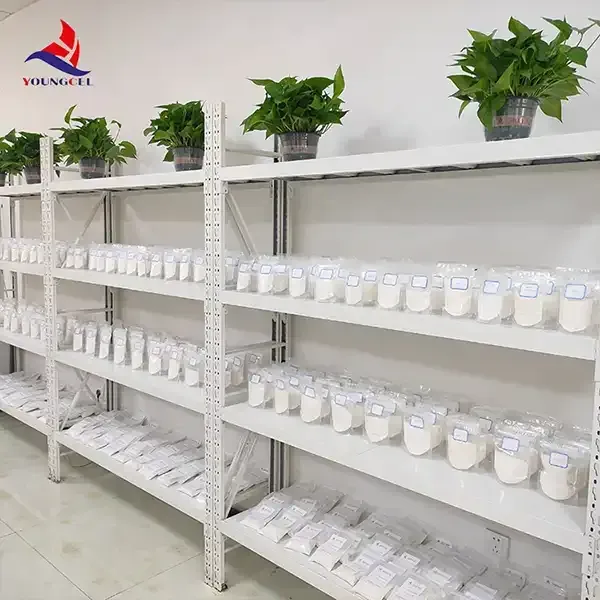The Role of Cellulose Coatings in Modern Applications
Cellulose, a natural polymer derived from plant cell walls, has gained significant attention in various industries due to its versatility, sustainability, and biodegradable properties. Among its numerous applications, cellulose coatings have emerged as a compelling solution for enhancing the performance of a wide range of products. These coatings utilize cellulose's inherent characteristics to provide protective, functional, and aesthetic benefits across multiple sectors, including food packaging, pharmaceuticals, and surface finishing in manufacturing.
1. Understanding Cellulose Coatings
Cellulose coatings are typically formulated from cellulose derivatives, such as cellulose acetate, hydroxypropyl methylcellulose (HPMC), and carboxymethyl cellulose (CMC). These derivatives are modified forms of cellulose that offer improved solubility and film-forming qualities, making them ideal for coating applications. The resulting films possess outstanding barrier properties, protecting the underlying materials from moisture, oxygen, and other environmental factors.
2. Advantages of Cellulose Coatings
One of the primary benefits of cellulose coatings is their biodegradability. Unlike synthetic coatings derived from petrochemical sources, cellulose-based coatings decompose naturally, reducing environmental impact and contributing to sustainability initiatives. This characteristic is increasingly crucial in an era where eco-consciousness shapes consumer preferences and regulatory policies.
In addition to their eco-friendly nature, cellulose coatings are non-toxic and safe for direct contact with food, making them particularly valuable in the food packaging industry. They provide moisture and oxygen barriers that prolong shelf life while maintaining the freshness and quality of food products. Moreover, being derived from renewable resources, cellulose coatings align well with the growing trend toward sustainable packaging solutions.
3. Applications in Food Packaging
In the food packaging sector, cellulose coatings are used to enhance the performance and sustainability of materials
. Traditional packaging solutions often rely heavily on plastics, which contribute to environmental pollution. By applying cellulose-based coatings to paper and cardboard, manufacturers can create packaging that not only protects food but also decomposes naturally after use. Recent advances in cellulose technology have led to the development of coatings that can withstand high temperatures and moisture, making them suitable for a wide variety of food products, including frozen foods, dairy items, and baked goods.cellulose coating

4. Pharmaceutical Applications
Cellulose coatings also find extensive use in the pharmaceutical industry. They serve as coatings for tablets and capsules, providing a controlled-release mechanism for active ingredients. This functionality enables the precise delivery of medication, improving patient compliance and therapeutic outcomes. Additionally, cellulose coatings can mask the taste of unpleasant medications, making them more palatable for patients, particularly children.
The biocompatibility of cellulose makes it an appealing choice in drug formulation, as it minimizes the risk of adverse reactions. The ability to customize cellulose coatings allows formulators to tailor the release rate of active ingredients according to specific medical needs, enhancing the efficacy of pharmaceutical products.
5. Surface Finishing and Industrial Applications
Beyond the food and pharmaceutical sectors, cellulose coatings have vital roles in surface finishing applications. They are employed in the automotive and furniture industries, providing a protective layer that enhances durability and aesthetic appeal. The coatings offer resistance to scratches, fading, and moisture, ensuring that products maintain their quality over time.
In addition to their protective qualities, cellulose coatings can be formulated to achieve a variety of finishes, ranging from glossy to matte. This versatility allows manufacturers to meet various consumer preferences and design requirements seamlessly.
Conclusion
As industries shift towards more sustainable practices, cellulose coatings stand out as a practical and effective solution. The biodegradable nature, safety, and multifunctionality of cellulose-based coatings position them as ideal candidates for various applications, from food packaging to pharmaceuticals and industrial uses. With ongoing research and innovation, the future of cellulose coatings appears bright, promising enhanced performance and reduced environmental impact across multiple sectors. Embracing cellulose coatings is not just a trend; it’s a step towards a more sustainable and responsible future in manufacturing and product development.
-
HEC 100000 Hydroxyethylcellulose for Paint | Superior ThickeningNewsAug.30,2025
-
Wall Putty Rdp Powder Packaging DesignNewsAug.29,2025
-
Introduction to Hpmc Hydroxypropyl Methyl CellulosNewsAug.29,2025
-
Hpmc Industri Grade IntegrationNewsAug.29,2025
-
How to Choose the Right Construction AdhesiveNewsAug.29,2025
-
Construction Adhesive StrengthNewsAug.29,2025




